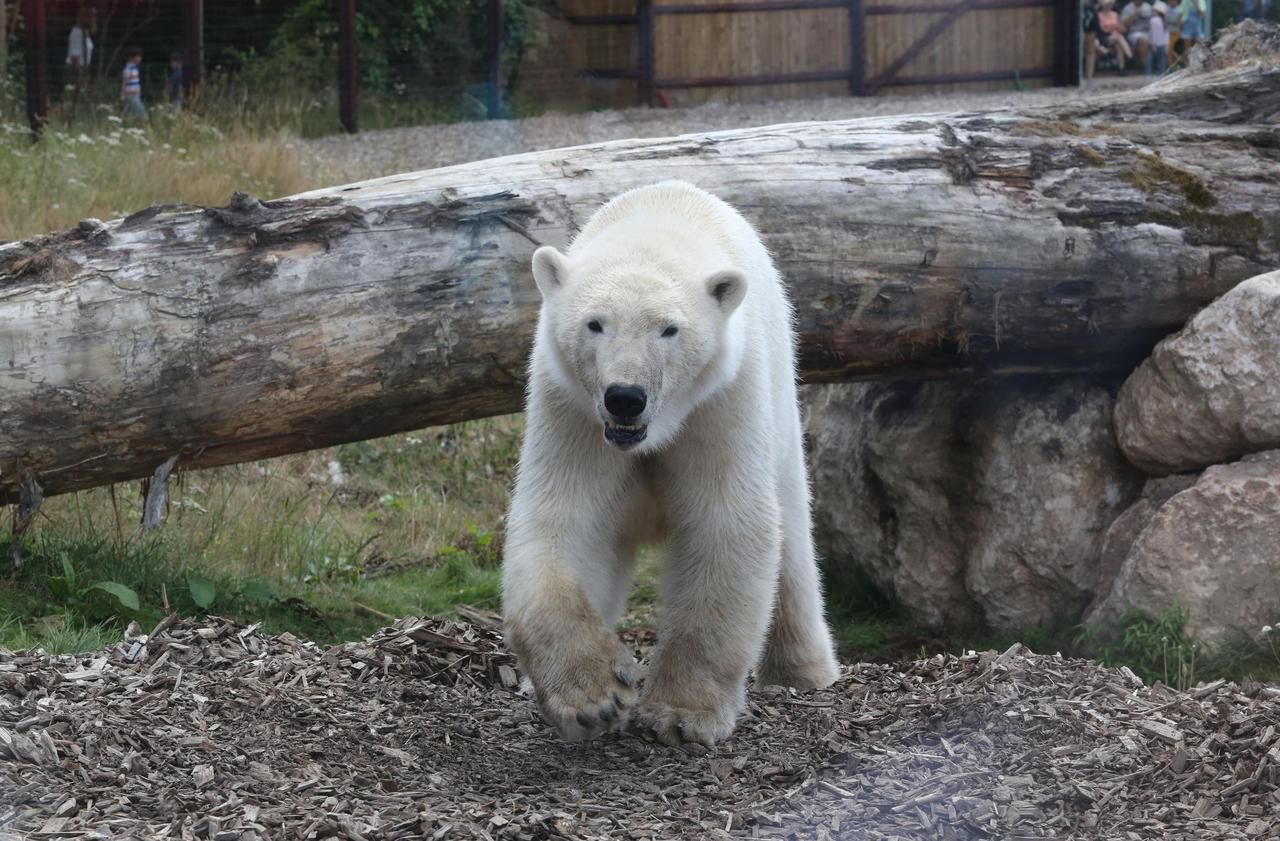Will our great-grandchildren live on a planet where the polar bear will be nothing more than a myth, reduced to an image in a history book? The pack ice, on which they breed and where they hunt seals, melt like sorrow. So much so that their chance of surviving the steadily rising temperatures has become as slim as the thickness of the summer ice in the Arctic Circle. An alarmist study, published in the scientific journal Nature Climate Change, estimates that global warming could even sign the virtual extinction of the species by the end of the century. Can we still save them?
"If we manage to save 10% of the current population, we will be lucky but I am frankly pessimistic, sighs Stéphane Hergueta, co-founder of the association the Arctic Circle. Unlike the situation of the lion or the elephant, which we can try to protect from the poaching they suffer, the melting of the sea ice is a phenomenon that we absolutely cannot control. "
VIDEO. Polar bears could be extinct by 2100
If ice is so essential to polar bears, it is because the pack ice serves them as a hunting ground in the spring to feed on the seals and store enough fat and energy to then last all summer and winter. following winter. "However, by 2100, it is estimated that the central Arctic Ocean will be almost empty of ice during the summer", underlines Stéphane Hergueta.
The surface area of sea ice divided by two in twenty years
The equation is both simple and tragic: without ice, these animals will starve. However, the surface area of sea ice has increased in summer from around six million km2 between 1980 and 2000 to three million today. And if the ice is melting, it is because greenhouse gas emissions, responsible for global warming, panic on the planet's surface and lead to a rise in mercury twice as fast in the Arctic Circle.
“Unfortunately, we cannot stop the climate change machine overnight,” emphasizes Florian Kirchner of the International Union for the Conservation of Nature (IUCN). “And you can't build a fence to protect polar bears from the rising temperature,” said Steven Amstrup, one of the study's authors and chief scientist for the NGO Polar Bears International.
"Despite an international treaty on the conservation of polar bears signed in 1973 by Canada, Denmark (Greenland), Norway (Svalbard), the United States and Russia, the twenty populations listed do not experience any demographic expansion. , explains Charlotte Nithart, from the NGO Robin des Bois. They are in quantitative and qualitative regression with a loss of weight, stature and their reproductive capacities ”. The environmental association also emphasizes that the fragmentation and disappearance of their natural habitat, added to the difficulty of feeding at sea, lead polar bears to fall back on land where they are exposed "to harassment from human activities".
A polar bear skin costs between 50,000 and 100,000 euros
"Today it is increasingly considered a problem animal, like the Pyrenean brown bear," deplores Charlotte Nithart. "While they are under the crossfire of threats and have become the icon of global warming, the international community still refuses to ban the international trade in skins and trophies", notes the association manager. A polar bear skin is traded on the market between 50,000 and 100,000 euros in Europe, Asia and the United States.
Newsletter My Earth
Every week, the environmental news seen by Le ParisienI'm registering
Your email address is collected by Le Parisien to enable you to receive our news and commercial offers. Learn more
To save the species, which today only numbers 25,000 individuals, some people are talking about the possibility of reducing the hunting quotas authorized in certain Arctic regions. Others talk about reintroducing captive-bred animals into the heart of the Arctic Circle, or even moving them south of the globe to Antarctica. Infeasible, according to the researcher from Polar Bears International, who believes that “it may be necessary to consider slaughtering the last polar bears, instead of leaving them to starve”.
An outcome that Florian Kirchner cannot be resolved. “The only solution to save the ice floes, and therefore the polar bear, is to fight effectively against greenhouse gas emissions and that all the states which signed the Paris agreement at COP21 finally respect it. "

